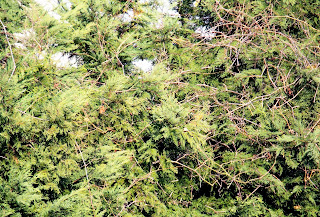A post! To Commemorate The Wonderful NYC Bat Walks In Central Park This Year: I'd like to take the time to congratulate the Leaders of the Bat Walk: Married couple Danielle Gustafson and Brad Klein; not only on yet another successful & educational Bat Walk - But, also on the wonderful article published in New York Newsday about it. Outstanding!
Well, I thought it would be interesting (and useful) to create a blog entry, to inform possible budding bat enthusiasts about the electronic bat detectors currently available. Since those reading this post are probably new to bat watching / bat detecting; I will simply list some of the entry-level models that are currently out there. Keep in mind, that sadly, we don't have many makers of low-cost bat detectors here in the US. Which is why, except for Tony Messina, the recommendations are from companies abroad. This blog also features full, detailed reviews of each. If you're interested, you can type in the name of the detector that interests you, in the 'Search This Blog' box on the right-hand side of the first page.
And, for those who are handy with basic soldering skills (simple electronic components): You could not possibly do better, than to look at the two kit offerings from Tony Messina in Arizona. Highly recommended!
There is the Simple Bat Detector Kit - and - The Bat Scanner (partially-built) Kit
Now, of course there are other detectors...Many of which are really awesome, but they begin to get expensive. If any other good, inexpensive detectors come to mind, I will update this post.
There are plenty of detailed reviews of other detectors on this blog, so if you don't mind spending more on a bat detector - By all means, check them out! (If you haven't noticed by now, I'm a bat detector nut!)
~90% of my bat detecting is passive monitoring of my backyard. Right outside my back window, in Bronx, NY. I happen to like Frequency Division detectors. They are convenient to plug into (via 3.5mm stereo cable) just about any digital voice recorder that one has available. Enabling you to get un-attended recordings of bat passes during the night.
I hope we have many new bat enthusiasts added to our ranks! Thanks to the work of Danielle and Brad. Of utmost importance, is an awareness that bats are beautiful, amazing, and very beneficial creatures. They have suffered a bad reputation (based on myths, etc.) for far too long! Well, I could go on and on...but, I'll say ciao for now.
Happy bat detecting!
Well, I thought it would be interesting (and useful) to create a blog entry, to inform possible budding bat enthusiasts about the electronic bat detectors currently available. Since those reading this post are probably new to bat watching / bat detecting; I will simply list some of the entry-level models that are currently out there. Keep in mind, that sadly, we don't have many makers of low-cost bat detectors here in the US. Which is why, except for Tony Messina, the recommendations are from companies abroad. This blog also features full, detailed reviews of each. If you're interested, you can type in the name of the detector that interests you, in the 'Search This Blog' box on the right-hand side of the first page.
These are bat detectors that are simple, inexpensive, and good performers:
The BatBox Baton, from BatBox in the U.K. - An outstanding, frequency division detector.
The USD6 from YS Design in Japan - A very neat, scanning Heterodyne detector.
And, for those who are handy with basic soldering skills (simple electronic components): You could not possibly do better, than to look at the two kit offerings from Tony Messina in Arizona. Highly recommended!
There is the Simple Bat Detector Kit - and - The Bat Scanner (partially-built) Kit
Now, of course there are other detectors...Many of which are really awesome, but they begin to get expensive. If any other good, inexpensive detectors come to mind, I will update this post.
There are plenty of detailed reviews of other detectors on this blog, so if you don't mind spending more on a bat detector - By all means, check them out! (If you haven't noticed by now, I'm a bat detector nut!)
~90% of my bat detecting is passive monitoring of my backyard. Right outside my back window, in Bronx, NY. I happen to like Frequency Division detectors. They are convenient to plug into (via 3.5mm stereo cable) just about any digital voice recorder that one has available. Enabling you to get un-attended recordings of bat passes during the night.
I hope we have many new bat enthusiasts added to our ranks! Thanks to the work of Danielle and Brad. Of utmost importance, is an awareness that bats are beautiful, amazing, and very beneficial creatures. They have suffered a bad reputation (based on myths, etc.) for far too long! Well, I could go on and on...but, I'll say ciao for now.
Happy bat detecting!













